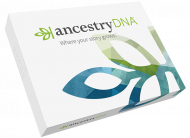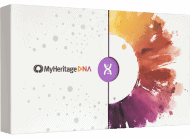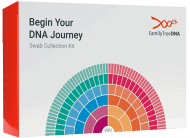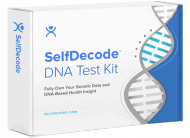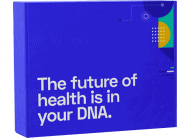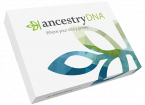Can I Take a DNA Test to Find Out My Ethnicity?
Yes, you can take a DNA test to find out your ethnic roots. The best DNA tests can provide you with detailed information regarding the regions your ancestors came from, and in some cases, the ethnic migration patterns of your ancestors over time. You can find out that while you are a majority Eastern European, your ancestors actually first lived along the Western European coastline and migrated over time.
It is essential to remember that DNA tests will provide you with geographic regions rather than countries. This is because countries change throughout time, and a country that existed in the 17th century may not exist on today’s map. Therefore, it common to see ethnic regions like Sub-Saharan Africa or Arabian Penninsula.
Why Should You Consider a DNA Test Kit?
As humans, many of us have a strong desire to better understand ourselves by connecting with our past. One of the best ways you can do this is by tangibly exploring your familial background.
Buying a DNA test kit is a step toward self discovery. Luckily, the science in this area has continued to improve over the past few years, and now includes a number of commercially available and affordable options.
A report from a DNA test will give you a clearer picture of who you are and where you come from – providing greater insight through resources that would essentially be impossible to obtain on your own.
How Accurate Are Ancestry DNA Tests?
Although the science behind at-home genetic testing is relatively new, vendors in this industry have come a very long way in a short amount of time. In fact, these companies typically have around 90%+ accuracy identifying our genetic variances.
The accuracy of your results depend on a few factors, including:
- The quality of the DNA sample provided
- The exact type of test being performed on your DNA
- The number of biogeographical regions covered by a vendor
- The size of a vendor’s reference database
As far as the actual lab work is concerned, there is a slight margin for inaccuracy. When vendors are assessing millions of locations on your DNA, they might make 1,000 or so errors, which could be reflected in your results. (This approximation also applies to companies that offer genetic health screenings, like 23andMe, Helix, and Orig3n.)
This could explain why, for example, your results might show that you’re part of an ethnic group you never suspected, or even why identical twins might receive different results.
Another factor to consider is that there is little genetic variation in certain parts of the world. The UK is a good example of this. Someone might believe their ancestry is exclusively English. However, England is genetically very similar to Ireland. So a possible test error could be a result of the similarities between two places.
You should also remember that everybody gets half their DNA from their mother and half from their father. That means there’s always a likelihood that somebody won’t get DNA from certain family members.
So, even if you grew up hearing stories about your distant Jewish ancestors, that ancestry may not show up in your final report. Importantly, though, that doesn’t mean that DNA test results are inaccurate. That’s just how DNA works.
How Are DNA Tests Continuing to Advance?
DNA testing has made leaps and bounds in a short time. The science is continually evolving, new research is always being conducted, and methodologies and technologies are constantly improving.
Accordingly, companies are steadily getting better at estimating, among other things:
- The percentages of your ethnicity
- Where your relatives lived
- The common ancestors of biogeographical groups
MyHeritage, for example, is now offering extremely accurate, genetic health reports. Other companies, like 23andMe, AncestryDNA, and FamilyTreeDNA are getting increasingly better at pinpointing the migrations of your ancestors over generations.
Importantly, test vendors are constantly comparing every new DNA set to the known reference groups that they have in their existing user data sets. These are changing and growing all the time. That means that a test taken three years ago would probably give different results today, as more individuals have added their personal information.
This is also why subscriptions can be important, as many companies will keep you updated as new, personally relevant data continues to become available. AncestryDNA, for example, will automatically update your report as new info comes in.
Three Types of DNA Tests
The three most common genealogical tests are autosomal, mtDNA, and Y-DNA. Each provides different genetic information. Keep in mind that not every company offers all three tests.
Autosomal DNA
This is the DNA type that’s most commonly tested in the industry. Autosomes are the chromosomes that you inherited from both of your parents, making it an ideal test for discovering your heritage and ancestors from up to ten generations ago. Autosomal DNA analysis is usually extremely accurate.
mtDNA
Mitochondrial DNA (mtDNA) is the kind that’s passed down exclusively from your mother. When put under a microscope, your results will show genetic information from your mother’s side of the family (maternal lineage). Not every company offers this test.
Y-DNA
This is the DNA that’s analyzed to show your father’s side of the family. Testing for this type of DNA is done on the Y chromosome, which is passed down only from father to son. This is where you have to be careful when shopping around – ladies wouldn’t want to mistakenly order a Y-DNA test!
What Kind of Information Does an Ancestry DNA Test Provide?
A detailed look at your family history.
Many DNA testing companies, such as Living DNA, are able to assess the migrations of your ancestors throughout history. Some even let you explore those migrations with user-friendly, interactive maps that span centuries. You’ll be able to see who emigrated to where, from what region, and when.
On top of that, DNA testing companies often have access to billions of records, like:
- Birth records
- Marriage certificates
- Photographs
- Obituaries
- Passports
MyHeritage, for example, allows you to search through over nine billion historical records. With access to such information, you can gradually construct a growing, shareable family tree that stretches centuries into the past.
What’s more, some companies will even actively help you in this process. AncestryDNA, for example, will notify you whenever they discover a potential genetic relationship.
Information on relatives you never knew you had.
Results from a direct-to-consumer DNA test allow you to connect with potential, living relatives. These are often people you never knew you were related to. This can be especially fulfilling for individuals who were adopted.
Depending on the company you opt for, you can connect with hundreds of DNA matches. Test providers typically have millions of customers in their reference databases.
In fact, AncestryDNA claims to have an online community of 20 million people. These are customers who have taken a vendor’s ancestry DNA tests and provided their contact info. The bigger the community, the more likely you are to find possible relatives, interact with them, and grow your family tree.
A clearer picture of your ethnic origins.
DNA test results give you a vivid look into your genetic history – from recent to ancient ancestry. It does this by closely looking at your personal DNA, and allowing you to see the molecular components that make you, you.
An ancestry DNA test can analyze millions of separate data points on the human genome. Since humans have about 99.9% of their DNA in common, the point is to take a close look at the specific genetic markers that vary from one another and make us each unique.
The analysis of these differentiating markers can provide a very accurate indication of who your ancestors were. If your markers are similar to those of a particular group, then you’ve most likely descended from that group.
How Do You Read DNA Test Results?
Laboratory DNA test results are typically easy to understand. Companies try to make everything as user-friendly as possible, although this will obviously vary across the industry. Going through so much data can be overwhelming, so go slowly.
Here are some basic points to keep in mind:
- Ethnicity percentages are just estimates
- Some percentages result from errors
- Sited relationships show possible DNA matches
- Health and wellness results aren’t definitive
- Why Do DNA Tests Show Regions and Not Countries?
- Countries and “regions” are not the same thing. Countries are man-made, politically-reliant constructs with no real, scientific relation to your genetics. Biogeographical regions, on the other hand, correlate with the locations of your genetic ancestors over
- generations. MyHeritage, for example, looks at 42 different regions.
Your specific DNA contains certain “markers.” These markers are the result of particular ethnic groups breeding within the same general location, or “region” over time. Groups that have mingled in the same region have genetic similarities. These regions typically overlap and happen naturally, unlike countries.
What Is a Reference Database?
A reference database is what makes finding living relatives possible. It’s the repository of every person who’s taken a vendor’s DNA test and made their info available.
Of course, every company is a little different. But generally speaking, it is a collection of customer names, genetic data, and contact info. AncestryDNA, for example, has the largest database.
Customers must set their privacy/sharing settings before or after receiving the results from their test kit. Depending on what those settings are, your test results can be used to connect you to people in that database with whom you share a genetic link. This applies to everyone in a company’s reference database.
What Is an Admixture?
An admixture is what you’ve inherited in your DNA from the combination of your ancestors. It refers to the breeding between ethnic groups in a particular region of the world. It’s a scientific term used for classifying your ethnicity percentages.
What Does it Mean to be Part Neanderthal?
Don’t worry if your DNA test results say that you’re part Neanderthal – it doesn’t mean anything bad.
Neanderthals were just one of many human species that existed 40,000 years ago. They lived in Europe and then, for reasons unknown, died off before civilization began. However, they mingled with other human species while they were around. So, it’s typical for anyone with European ancestry to have a bit of Neanderthal in their DNA.
What Other Types of DNA Test Kits Are Available?
DNA testing companies are increasingly providing more than ancestry services these days. Beyond ancestry, the two most common types of DNA tests include diet and fitness and health and wellness.
Diet and Fitness
These types of DNA tests can provide useful insight regarding the ideal nutrition and exercise regimens based on your genetic background. For example, Orig3n focuses on examining the genes related to:
- Metabolism
- Nutrition
- Fitness potential
- Skin and hair
- Behavior
- And more
Health and Wellness
Many DNA testing companies can help you determine any health conditions that you might be genetically predisposed to or be a carrier of. This information is important for knowing what symptoms to look out for or preventative measures to take. For example, tests predispositions for up to 40 health conditions, including:
- Parkinson’s disease
- Breast cancer
- Alzheimer’s disease
How Much Does a DNA Test Cost?
Prices for DNA tests vary wildly. Depending on the vendor and exact test you order, you can expect to pay anywhere from under $50 to over $600. You should always be mindful when shopping around for the right test for you. You should also be as selective as possible. And don’t forget to be thorough when browsing around for the right test.
Overall, some companies will offer better value for your money than others. However, you should always keep your eyes open for special offers, available coupons, and discounted packages. Also, remember that not every company offers free shipping, and there could be ongoing subscriptions or hidden fees. So always read the fine print.
How Do I Know Which DNA Test Is Right for Me?
Finding the right DNA test kit really depends on your specific needs. So you have to have a good idea of what you’re in the market for. No two vendors are exactly the same. Some companies, like MyHeritageand AncestryDNA, specialize in coupling your test results with access to billions of historical records to help build your family tree.
On the other hand, while a vendor might not offer that wealth of information, it may offer a decently detailed ancestry report at a very cheap price. So if affordability is your priority, consider a company like Vitagene.
Furthermore, some vendors specialize in different majority background reference databases. So depending on your ethnic background, you may be better off choosing one vendor over another.
FamilyTreeDNA, for example, has a map of ancestors for European descendants. Living DNA can tell you the exact county, e.g. Cornwall or Devon, that a British ancestor lived in generations ago. And HomeDNA offers DNA tests specifically for those of African or Asian heritage.
Overall, before you purchase a test from any vendor, remember that your needs are as individualized as your DNA. So the goal is to find a vendor that meets those needs.


